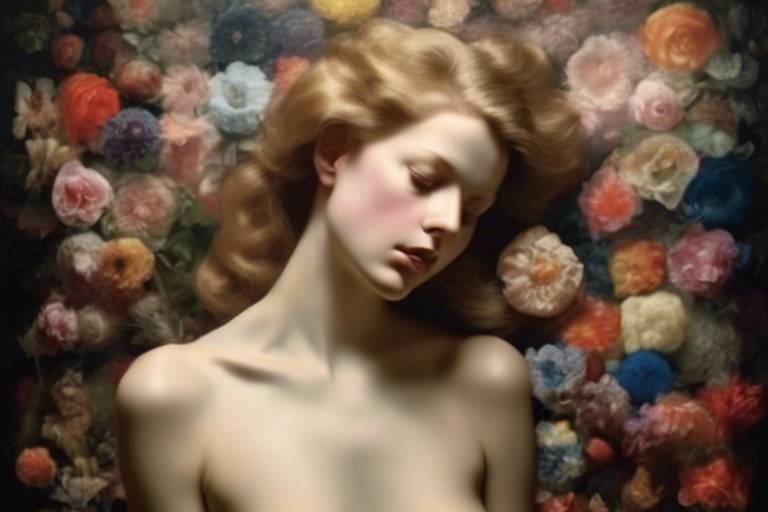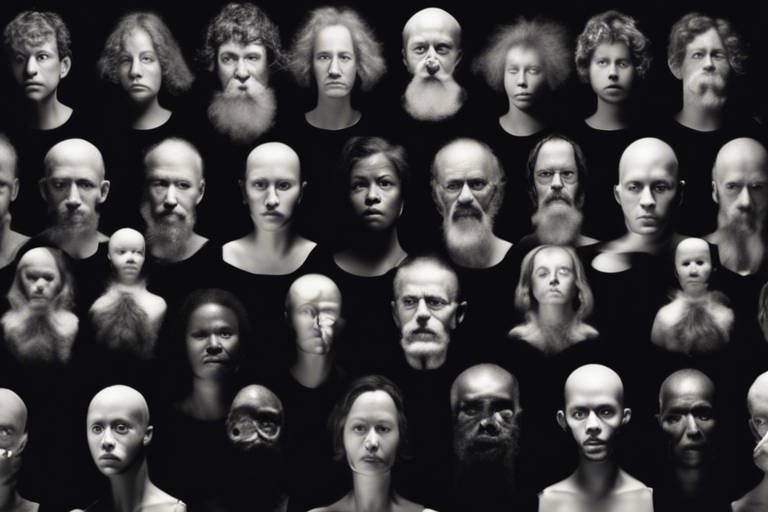Can the Philosophy of Art Help Us Understand Beauty Better?
Have you ever stood before a piece of art and felt an overwhelming sense of beauty wash over you? Perhaps it's a painting, a sculpture, or even a piece of music that resonates deeply within your soul. The philosophy of art invites us to explore these feelings more profoundly, asking us to consider what beauty truly means and how it shapes our experiences. This journey into the intersection of philosophy and art can be both enlightening and transformative, offering us a lens through which to view the world around us.
At its core, the philosophy of art challenges us to think critically about beauty. What is it? Is it merely a visual experience, or does it extend beyond the surface? By examining various philosophical perspectives, we can uncover layers of meaning that enrich our understanding of beauty. This exploration is not just an academic exercise; it is a deeply personal journey that can alter how we perceive the world.
Many thinkers throughout history have grappled with the concept of beauty. From ancient philosophers like Plato and Aristotle to contemporary theorists, each has contributed to a rich tapestry of ideas that shape our understanding today. For instance, Plato viewed beauty as a reflection of an ideal form, a perfect version of reality that exists beyond our tangible experiences. In contrast, Aristotle grounded beauty in the observable world, emphasizing the importance of representation and experience. These differing perspectives invite us to ask questions: Is beauty an objective reality, or is it subjective, shaped by our personal experiences and cultural backgrounds?
As we delve deeper into the philosophy of art, we discover that beauty is not just an aesthetic experience; it is also a profound emotional response. Art has the power to evoke feelings, stir memories, and even challenge societal norms. This emotional engagement is crucial in shaping our perception of beauty. When we connect with a piece of art on an emotional level, we are not only appreciating its aesthetic qualities but also understanding the deeper meanings it conveys.
In our modern world, beauty often intertwines with the complexities of life, reflecting societal values and issues. Art serves as a mirror, revealing the cultural context from which it emerges. By examining the relationship between art and society, we can gain insights into how beauty is perceived and valued in different cultures and eras. This understanding encourages us to appreciate the diversity of artistic expression and the myriad ways beauty manifests in our lives.
Ultimately, the philosophy of art invites us to reconsider our definitions of beauty. It challenges us to look beyond the surface and to recognize beauty in the everyday moments of our lives. Whether it's the delicate petals of a flower, the laughter of a child, or the warmth of a sunset, beauty is all around us, waiting to be discovered. By embracing this broader perspective, we can cultivate a deeper appreciation for the aesthetic qualities that enrich our daily experiences.
- What is the philosophy of art? The philosophy of art explores fundamental questions about the nature of art, beauty, and aesthetic experience, examining how these concepts influence human perception and understanding.
- How does art reflect societal values? Art often serves as a mirror to society, expressing cultural norms, values, and issues, and allowing us to see how beauty is interpreted across different contexts.
- Can beauty be subjective? Yes, beauty is often considered subjective, shaped by personal experiences, cultural backgrounds, and emotional responses to art and the world around us.
- Why is emotional engagement important in art? Emotional engagement enhances our appreciation of art, allowing us to connect with it on a deeper level and understand the messages it conveys about beauty and life.
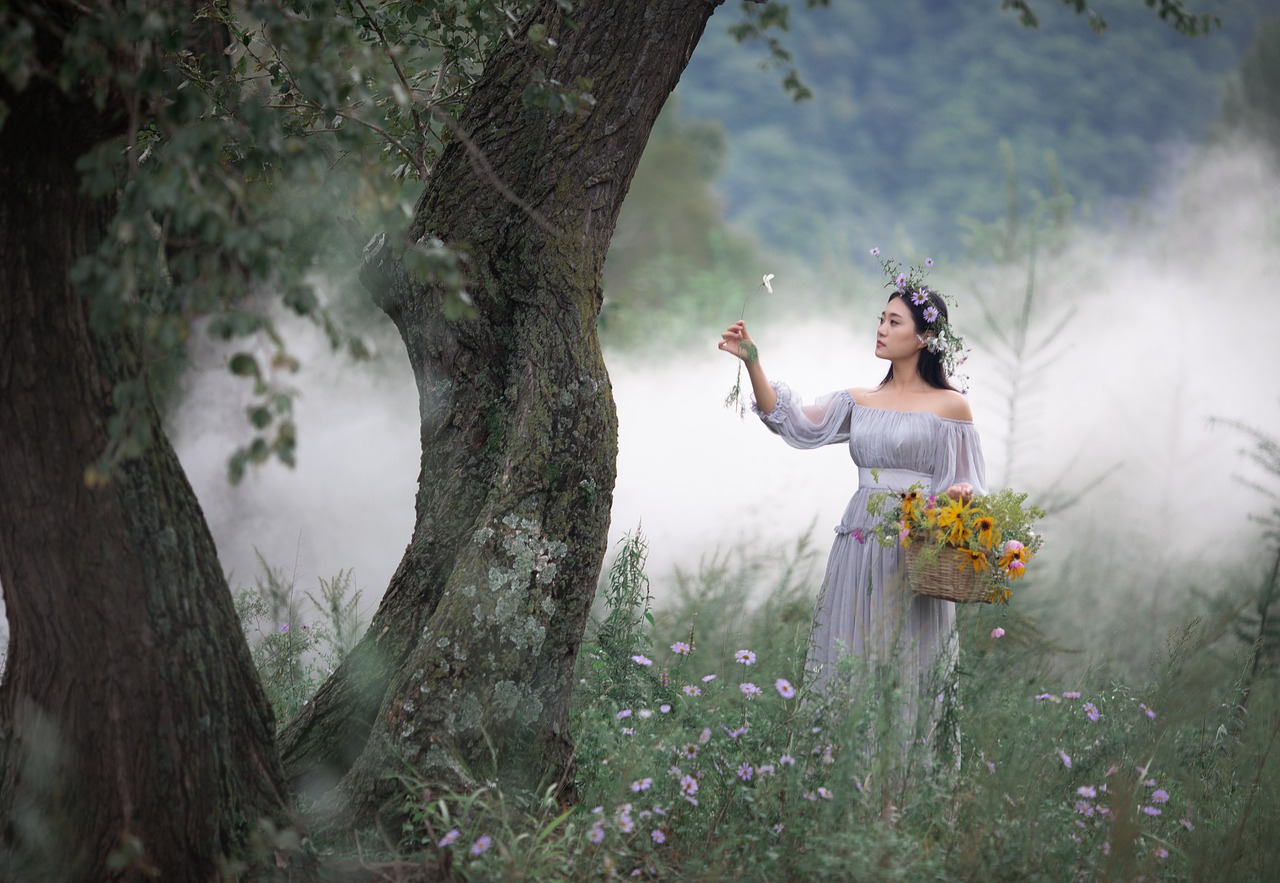
The Nature of Beauty
When we think about beauty, what comes to mind? Is it the delicate petals of a rose, the grandeur of a sunset, or perhaps the intricate brushstrokes of a masterful painting? The nature of beauty is a complex tapestry woven from various philosophical threads, and it has captivated thinkers throughout history. From the ancient Greeks to contemporary artists, the quest to define beauty has sparked debates and discussions that continue to resonate today.
Philosophers have long sought to understand beauty, often framing it within the context of subjectivity and objectivity. For instance, is beauty an inherent quality of an object, or is it merely a perception shaped by individual experiences? Plato, the great philosopher, argued that beauty exists in the realm of ideal forms—perfect, unchanging ideals that our physical world only attempts to imitate. This notion suggests that beauty is not just a fleeting sensation; rather, it is a reflection of a higher, more perfect reality.
On the other hand, Aristotle challenged Plato’s view by asserting that beauty can be found in the tangible world around us. He emphasized the importance of empirical observation and argued that beauty is rooted in the harmony and proportions present in nature. According to Aristotle, when we encounter beauty, we are not just observing an ideal; we are experiencing a connection to the world as it is. This perspective encourages us to appreciate beauty in its many forms, from the symmetry of a well-crafted sculpture to the chaotic beauty of a bustling city street.
As we delve deeper into the nature of beauty, it becomes clear that beauty is not a monolithic concept. It is shaped by cultural contexts and influenced by societal values. For example, what one culture deems beautiful may not hold the same significance in another. This cultural relativity invites us to explore beauty through a more inclusive lens, recognizing that our perceptions are often colored by our backgrounds and experiences.
Moreover, the emotional resonance of beauty cannot be overlooked. The feelings that a beautiful piece of art or a breathtaking landscape evokes in us can be profound and transformative. Beauty has the power to elicit joy, nostalgia, and even sorrow, reminding us of our shared humanity. As we engage with art and nature, we find ourselves not just observers but active participants in the experience of beauty.
In summary, the nature of beauty is a dynamic interplay of philosophical ideas, cultural influences, and emotional responses. It challenges us to look beyond the surface and appreciate the deeper meanings that beauty can convey. Whether we find beauty in the ideal forms of Plato, the empirical observations of Aristotle, or the diverse expressions found across cultures, one thing is clear: beauty is an essential part of the human experience, inviting us to explore, reflect, and connect with the world around us.

Historical Perspectives on Art and Beauty
Throughout history, the intertwining of art and beauty has been a profound subject of inquiry, sparking debates among philosophers, artists, and thinkers alike. Each era has brought its unique interpretations and frameworks that have shaped how we perceive beauty in art. From the ancient philosophies of Greece to the vibrant movements of the Renaissance and beyond, these historical perspectives provide a rich tapestry of ideas that continue to influence contemporary views on aesthetics.
In ancient Greece, beauty was often associated with the divine and the ideal. Thinkers such as Plato and Aristotle laid foundational concepts that would resonate through centuries. Plato, for instance, proposed that beauty exists in the realm of ideal forms, suggesting that tangible objects are mere shadows of perfect ideals. This notion posited that true beauty could only be comprehended through intellectual contemplation rather than sensory experience. Plato's perspective on beauty as a reflection of perfection encouraged artists to strive for an idealized representation in their work, influencing not only the art of his time but also the trajectory of Western art history.
Conversely, Aristotle offered a more pragmatic approach. He critiqued Plato's theory by emphasizing the importance of empirical observation. For Aristotle, beauty was not an abstract ideal but rather found in the tangible world around us. He believed that art should represent reality and evoke emotions, thus establishing a connection between the observer and the artwork. This grounding of beauty in the observable world laid the groundwork for future artistic movements that valued realism and representation.
The Renaissance marked a significant shift in the understanding of beauty, fueled by the principles of Humanism. Artists like Leonardo da Vinci and Michelangelo celebrated the human form and the natural world, moving away from the rigid idealism of the past. They embraced individualism, portraying subjects with depth and emotion, which resonated deeply with audiences. This era not only redefined beauty in terms of human experience but also emphasized the importance of personal expression in art.
As we moved into the modern era, aesthetic theories evolved further. Movements such as Formalism and Expressionism emerged, each offering distinct perspectives on beauty. Formalists argued that beauty lies in the formal qualities of art—color, line, and composition—while Expressionists contended that emotional expression is paramount. These theories challenged traditional notions of beauty and expanded the conversation to include subjective experiences and cultural contexts.
In summary, the historical perspectives on art and beauty reveal a dynamic evolution of thought. Each philosophical framework, from Plato's ideal forms to the emotional engagement of modern aesthetics, contributes to our understanding of beauty as a multifaceted concept. By examining these historical movements, we can appreciate the rich dialogue that continues to shape how we perceive beauty in art and life today.
- What is the significance of Plato's theory of ideal forms in art?
Plato's theory suggests that art should strive to represent an ideal version of beauty, influencing artists to create works that reflect perfection rather than reality. - How did the Renaissance change perceptions of beauty?
The Renaissance introduced a focus on humanism, emphasizing individualism and the beauty of the natural world, which allowed for more personal expression in art. - What are some modern theories of aesthetics?
Modern theories include Formalism, which focuses on the formal elements of art, and Expressionism, which prioritizes emotional expression and subjective experience.

Plato’s Ideal Forms
When we dive into the philosophical ocean of Plato’s Ideal Forms, we’re not just splashing around in shallow waters; we’re exploring the depths of what beauty truly means. Plato, a profound thinker of ancient Greece, proposed that beyond the physical world we see lies a realm of perfect, abstract Forms. These Forms are the ultimate essence of things, representing the highest standard of beauty, truth, and goodness. Imagine walking through a gallery filled with artworks; each piece captures a fragment of beauty, yet none quite reaches the ideal that exists in this ethereal realm. This notion suggests that every beautiful object we encounter is merely a shadow or reflection of an ideal Form, an imperfect representation of an unachievable perfection.
Plato believed that our understanding of beauty and art is inherently tied to these Ideal Forms. For him, beauty is not just about aesthetic pleasure; it’s about recognizing the deeper truth that each artwork attempts to convey. When a painter creates a landscape, they are not just depicting trees and mountains; they are striving to capture the essence of ‘Landscapeness’—the ideal Form of what a landscape should be. This relationship between the physical and the ideal allows us to appreciate art on multiple levels, engaging not only our senses but also our intellect and emotions.
In a way, Plato’s theory invites us to reflect on our own perceptions of beauty. Have you ever looked at a piece of art and felt an overwhelming sense of connection or inspiration? That feeling might stem from an unconscious recognition of the ideal Form that the artist is attempting to express. This connection is not merely about what we see but also about what we feel and understand. It challenges us to consider: how do our experiences shape our perception of beauty? Are we merely observers, or are we participants in a dialogue with the ideal?
To illustrate this complex relationship, let’s consider a simple table that summarizes Plato's views on beauty and Ideal Forms:
| Aspect | Plato's Perspective |
|---|---|
| Nature of Beauty | Beauty as a reflection of Ideal Forms |
| Art's Purpose | To strive for representation of the ideal |
| Perception | Influenced by personal experience and understanding |
| Connection to Truth | Beauty is tied to the pursuit of truth and goodness |
In conclusion, Plato's Ideal Forms offer us a profound framework for understanding beauty. They compel us to look beyond the surface and engage with the deeper meanings behind artistic expressions. This philosophical lens not only enriches our appreciation of art but also invites us to explore our own beliefs and values regarding beauty. So, the next time you encounter a piece of art, ask yourself: what ideal is the artist trying to express? What deeper truths does this work reveal about beauty and existence?

Aristotle's Critique
Aristotle, a towering figure in the landscape of philosophy, offered a compelling critique of his mentor Plato's theory of ideal forms. While Plato posited that beauty exists in a realm of perfect ideals, Aristotle grounded beauty in the tangible world. He argued that art should not merely strive to replicate these ideal forms but should reflect the reality of human experience. This perspective was revolutionary, as it shifted the focus from abstract ideals to the concrete, observable world around us.
In Aristotle's view, beauty is not simply about symmetry or proportion, although those elements play a role. He believed that true beauty arises from the unity of form and function. This means that an object’s beauty is closely tied to its purpose and how well it fulfills that purpose. For instance, a beautifully crafted chair is not just aesthetically pleasing; it is also functional, providing comfort and support. This intrinsic connection between beauty and utility challenges us to reconsider how we perceive art and beauty in our daily lives.
Furthermore, Aristotle emphasized the importance of emotional resonance in art. He believed that art should evoke emotions and should be a reflection of reality, capturing the essence of human experience. This idea leads us to consider how art can communicate profound truths about our existence, rather than simply serving as a decorative element. In his work, Aristotle introduced the concept of catharsis, suggesting that art has the power to purge emotions, allowing audiences to engage with their feelings in a safe space. Through this lens, the beauty of art becomes intertwined with its ability to resonate emotionally with its audience.
Moreover, Aristotle's critique of idealism paved the way for a more inclusive understanding of beauty. He argued that the diversity of the world, with its imperfections and irregularities, contributes to what we find beautiful. This perspective invites us to appreciate beauty in the flawed and the ordinary, rather than solely in the idealized. For example, a weathered tree, with its gnarled branches and uneven bark, can possess a beauty that is rich in character and history, reminding us that beauty often lies in the stories of things rather than their perfection.
In summary, Aristotle's critique of Plato's ideal forms enriches our understanding of beauty by emphasizing the importance of reality, function, and emotional engagement. By encouraging us to look beyond mere aesthetics, he invites us to explore the deeper meanings and connections that art can offer. This shift in perspective not only broadens our appreciation of beauty but also enhances our engagement with the world around us.
- What is the main difference between Plato and Aristotle's views on beauty?
Plato believed in ideal forms of beauty that exist in a separate realm, while Aristotle grounded beauty in the observable world, emphasizing its connection to function and emotional resonance. - How does Aristotle's concept of catharsis relate to beauty?
Catharsis refers to the emotional cleansing that art can provide, suggesting that beauty in art is linked to its ability to evoke and process emotions. - Can beauty be found in imperfection according to Aristotle?
Yes, Aristotle believed that beauty is not limited to perfection; it can be found in the unique characteristics and stories of objects, including their flaws.
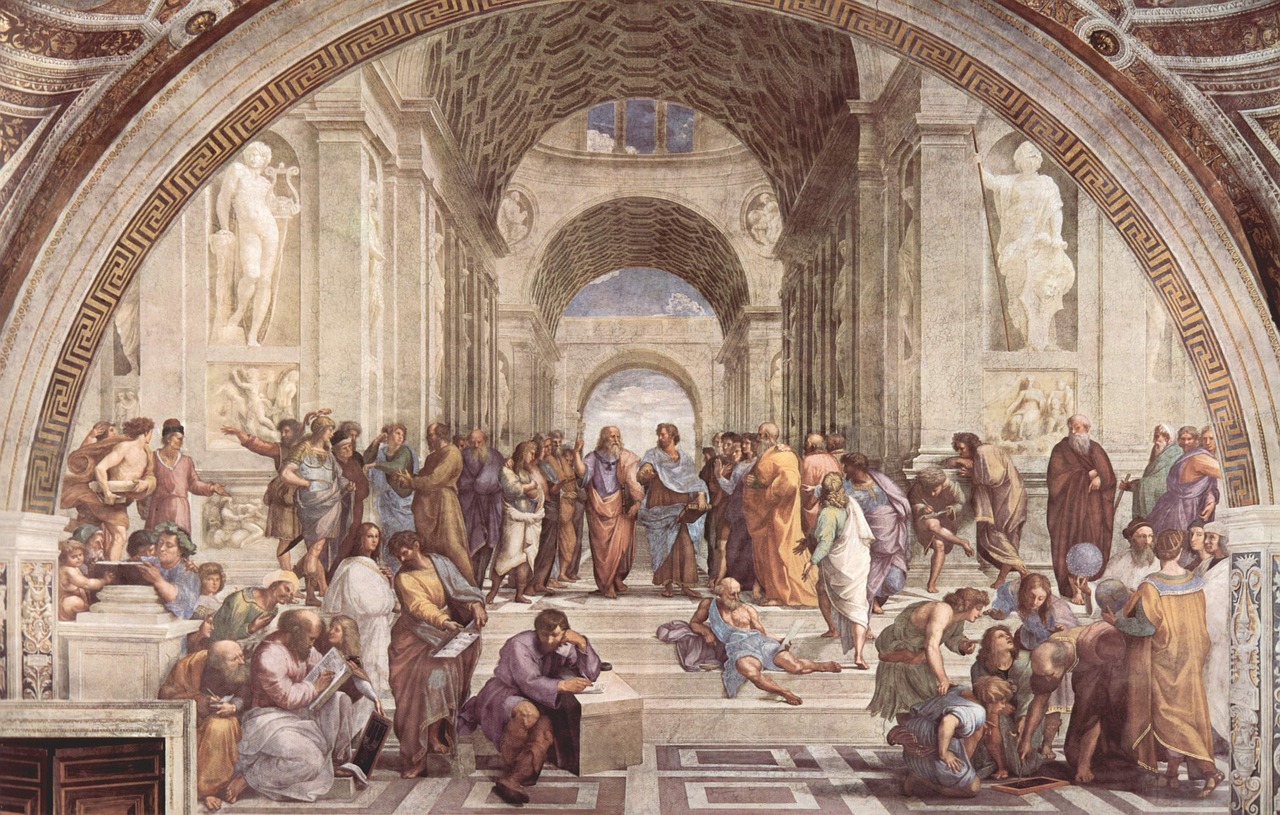
Renaissance Humanism
During the Renaissance, a profound shift occurred in the way beauty was perceived, largely driven by the rise of humanism. This intellectual movement emphasized the value of human beings, their experiences, and their capacity for reason, fundamentally altering the landscape of art and aesthetics. Artists began to focus not just on religious themes but also on the human experience, portraying individuals with a sense of realism and emotional depth that had rarely been seen before. The humanist perspective encouraged artists to explore the natural world and the human form, leading to a celebration of individuality and the beauty inherent in the human experience.
Artists like Leonardo da Vinci and Michelangelo exemplified this new approach. They sought to capture not only the physical beauty of their subjects but also their inner lives. For instance, da Vinci's Mona Lisa is renowned not just for its technical mastery but for the enigmatic expression that invites viewers to ponder the subject's emotions and thoughts. This focus on the individual was revolutionary, as it shifted the narrative from divine perfection to human authenticity.
Moreover, Renaissance humanism fostered a renewed interest in classical antiquity. Artists and thinkers looked back to the works of ancient Greece and Rome, drawing inspiration from their philosophies and artistic styles. This revival of classical ideals introduced a new perception of beauty, one that celebrated harmony, proportion, and balance—elements that became central to Renaissance art. The Vitruvian Man, another masterpiece by da Vinci, illustrates this concept beautifully, merging art and science to reflect the ideal human form based on geometric principles.
As a result of these shifts, beauty during the Renaissance was not merely about aesthetic appeal; it became a reflection of deeper philosophical ideas. The connection between beauty and virtue was emphasized, suggesting that to appreciate beauty was to engage with the moral and ethical dimensions of life. This notion paved the way for later thinkers to explore the relationship between beauty and the human condition, making art a vital medium for expressing complex ideas about existence, morality, and the pursuit of knowledge.
In essence, Renaissance humanism transformed the narrative of beauty from a static, divine ideal to a dynamic, evolving concept rooted in human experience. This period laid the groundwork for future explorations of beauty in art, influencing not just the artists of the time but also shaping the way we perceive beauty in our lives today.
- What is Renaissance humanism?
Renaissance humanism is an intellectual movement that emerged during the Renaissance, emphasizing the value of human beings, their experiences, and their potential for reason and creativity. - How did Renaissance humanism influence art?
The movement shifted the focus of art from religious themes to human experiences, celebrating individuality and the beauty of the human form, as seen in works by artists like Leonardo da Vinci and Michelangelo. - What are some key characteristics of Renaissance art?
Renaissance art is characterized by realism, attention to human emotion, classical themes, and a focus on proportion and balance. - How does beauty relate to morality in Renaissance thought?
During the Renaissance, beauty was often linked to virtue, suggesting that the appreciation of beauty also involved engaging with moral and ethical questions about life.

Modern Aesthetic Theories
The landscape of modern aesthetic theories is as diverse and vibrant as the art it seeks to understand. In a world where traditional definitions of beauty have been challenged and redefined, contemporary thinkers have introduced various frameworks that invite us to explore the essence of beauty from multiple angles. Among these theories, formalism and expressionism stand out as pivotal movements that have significantly shaped our appreciation of art and beauty today.
Formalism emphasizes the formal elements of art—such as color, line, shape, and texture—over its narrative or emotional content. This approach suggests that the beauty of a piece lies in its composition and the way these elements interact with one another. Think of it like appreciating a symphony; while the melody is captivating, it’s the intricate arrangement of notes and harmonies that create a truly beautiful experience. Formalists argue that by focusing on these aesthetic qualities, we can reach a deeper understanding of what makes art beautiful, independent of its subject matter or the artist's intent.
On the other hand, expressionism prioritizes the emotional and subjective experience of art. This theory posits that beauty is not confined to formal elements but is deeply rooted in the feelings and experiences that art evokes in the viewer. For instance, a painting that stirs feelings of joy or melancholy can be seen as beautiful because of the emotional connection it fosters. Expressionism encourages us to engage with art on a personal level, allowing our own feelings and interpretations to shape our understanding of beauty. It’s akin to watching a film that resonates with your life experiences; the beauty lies not just in the story told but in how it makes you feel.
These modern aesthetic theories reflect broader societal shifts, where the individual experience of beauty is celebrated. They remind us that beauty is not a monolithic concept but rather a tapestry woven from diverse threads of perception, emotion, and cultural context. As we navigate through these theories, we find ourselves asking questions such as: What does beauty mean to us personally? and How do our experiences shape our perceptions of art? These inquiries lead to a richer understanding of beauty, encouraging us to embrace its complexity.
In conclusion, modern aesthetic theories invite us to reconsider our preconceived notions of beauty. Whether through the lens of formalism, focusing on the elements of art, or expressionism, emphasizing emotional resonance, we are encouraged to explore the multifaceted nature of beauty in our lives. As we engage with these theories, we not only deepen our appreciation for art but also enrich our understanding of beauty as a fundamental aspect of the human experience.
- What is formalism in art? Formalism is an aesthetic theory that emphasizes the formal elements of art, such as color, line, and composition, rather than the content or emotional impact of the artwork.
- How does expressionism differ from formalism? While formalism focuses on the technical aspects of art, expressionism centers on the emotional experiences and subjective interpretations that art evokes in the viewer.
- Can beauty be subjective? Yes, beauty is highly subjective and can vary greatly from person to person based on individual experiences, emotions, and cultural backgrounds.
- Why is understanding modern aesthetic theories important? Understanding these theories helps us appreciate the complexity of beauty in art and encourages us to engage with art on a deeper, more personal level.

The Role of Emotion in Art
Art is not just a feast for the eyes; it’s a symphony for the soul. When we step into a gallery or gaze at a painting, we often find ourselves swept away by a wave of emotions. But why does art elicit such profound feelings? The answer lies in the intricate relationship between emotion and artistic expression. Emotions are the threads that weave together our experiences, and art serves as a canvas for those feelings. It’s like a mirror reflecting the inner workings of our hearts and minds.
When an artist creates, they pour their emotions into their work, whether it’s joy, sorrow, anger, or love. This emotional investment transforms a mere image into a powerful statement. Have you ever looked at a painting and felt a rush of nostalgia or a pang of sadness? That’s the magic of art! It connects with us on a deeply personal level, often speaking to our experiences and memories.
Moreover, the emotional responses elicited by art can vary widely from person to person. What moves one individual to tears may leave another feeling indifferent. This subjectivity is what makes art so fascinating. It invites us to explore our feelings and question our perceptions. For instance, consider the following emotional responses that art can evoke:
- Joy: Bright colors and lively subjects can uplift our spirits.
- Sorrow: Dark themes and somber tones may resonate with our own experiences of loss.
- Anger: Provocative pieces can challenge societal norms and ignite our passions.
- Peace: Calming landscapes or serene portraits can bring a sense of tranquility.
But it’s not just about how we feel; it’s also about how those feelings shape our understanding of beauty. Emotion acts as a lens through which we perceive art. It can heighten our appreciation for the intricacies of a piece, allowing us to see beyond the surface. This emotional engagement is crucial because it transforms passive observation into an active dialogue between the viewer and the artwork.
Furthermore, art plays a significant role in fostering empathy and connection. When we engage with a piece that resonates with our own experiences, it creates a bridge between us and the artist, as well as between us and other viewers. This shared emotional experience can foster a sense of community, reminding us that we are not alone in our feelings. In this way, art becomes a powerful tool for social connection and understanding.
In essence, the role of emotion in art is multifaceted. It not only enhances our personal experience but also enriches our collective cultural landscape. By embracing the emotional aspects of art, we can deepen our appreciation for beauty and its significance in our lives. So next time you encounter a piece of art, take a moment to reflect on the feelings it stirs within you. What story is it telling? How does it resonate with your own journey? These questions can lead you to a more profound understanding of both the artwork and yourself.
- Why do we feel emotions when we look at art?
Emotions in art arise from the artist's expression and our personal experiences, creating a unique connection. - Can art evoke different emotions in different people?
Absolutely! Each person's background, memories, and feelings influence how they perceive and react to art. - How can I enhance my emotional experience with art?
Take your time to observe the details, reflect on your feelings, and consider the context of the artwork.

Empathy and Connection
When we step into a gallery or gaze at a piece of art, what we often seek is not just a visual experience but a deeper connection. Art has this remarkable ability to evoke empathy, allowing us to step into the shoes of the artist or the subjects depicted. This connection transcends mere observation; it invites us to feel, to reflect, and to understand. Have you ever looked at a painting and felt as if it was speaking directly to your soul? That’s the magic of empathy in art!
Empathy in art can manifest in various ways. For instance, when we see a portrait that captures a moment of vulnerability, it can resonate with our own experiences of joy or sorrow. This emotional engagement is what makes art not just a static object but a living conversation between the viewer and the creator. The artist pours their emotions, struggles, and triumphs into their work, and when we connect with that, we’re engaging in a profound dialogue.
Consider how different art forms, from paintings to sculptures to performance art, can elicit strong emotional responses. A poignant sculpture can convey a sense of loss, while a vibrant painting might evoke feelings of joy and celebration. The beauty of these connections lies in their subjectivity; what strikes a chord with one person may not resonate with another. This diversity of experience is what makes the world of art so rich and varied.
Moreover, empathy in art extends beyond personal feelings. It can serve as a mirror reflecting societal issues and human experiences. For example, artists often tackle themes of injustice, love, and resilience, inviting us to empathize with those who may be different from us. This connection can lead to greater understanding and compassion in our everyday lives. When we see the world through the lens of art, we begin to appreciate the beauty in diversity and the shared human experience.
To illustrate this point, let’s take a look at a few famous artworks and the emotions they evoke:
| Artwork | Artist | Emotion Evoked |
|---|---|---|
| The Scream | Edvard Munch | Existential dread and anxiety |
| Starry Night | Vincent van Gogh | Wonder and introspection |
| Guernica | Pablo Picasso | Anguish and outrage |
As we can see from the table, each artwork resonates with different emotions, showcasing how empathy can be a powerful tool for connection. By engaging with these pieces, we not only appreciate their aesthetic beauty but also the deeper sentiments they convey. This emotional engagement can transform our understanding of beauty itself, making it a rich tapestry woven from our shared human experiences.
Ultimately, empathy and connection in art remind us that beauty is not just in the visual appeal but in the stories, emotions, and experiences that art encapsulates. It challenges us to look beyond the surface and to engage with the emotional depths of our shared humanity. So, the next time you encounter a piece of art, take a moment to connect with it on a deeper level. Ask yourself, “What emotions does this evoke in me?” You might be surprised at the beauty you uncover!
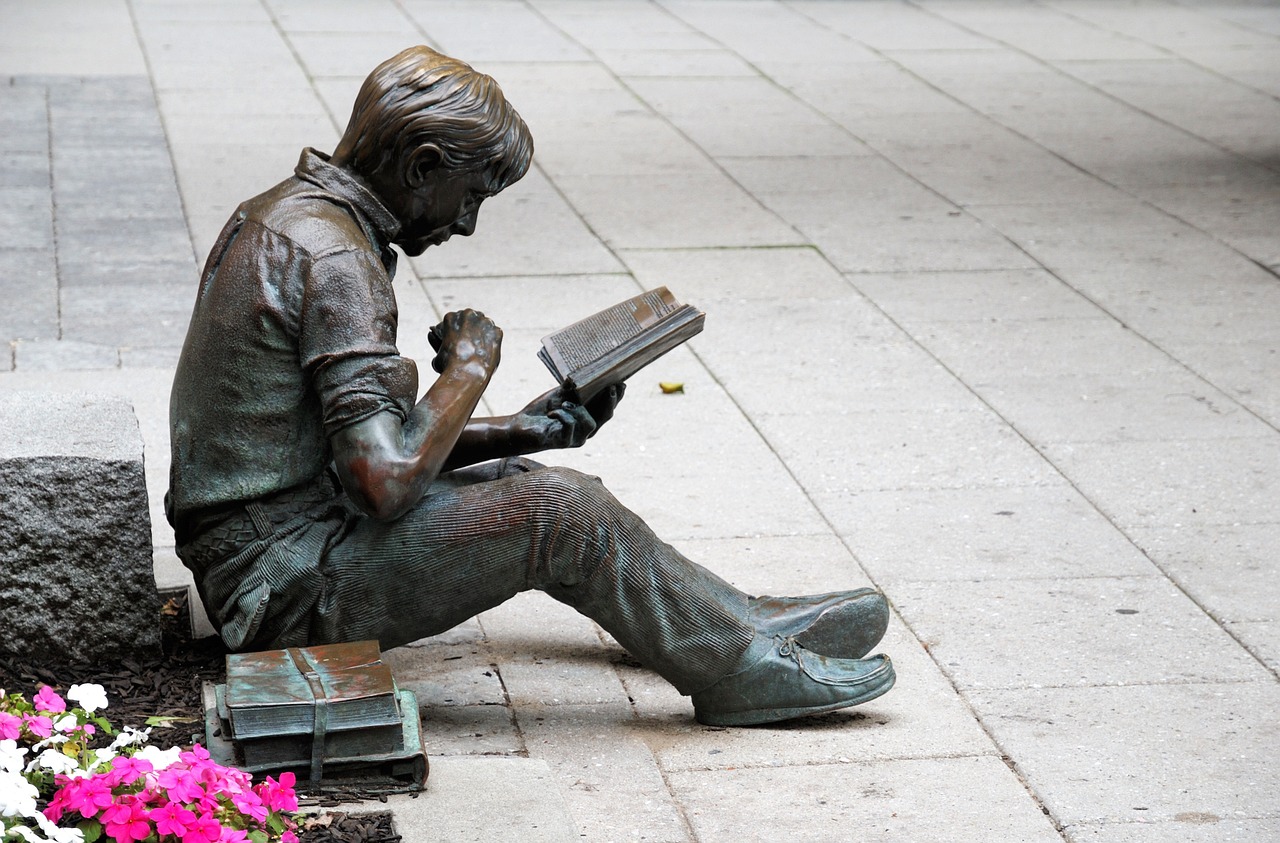
Art as a Reflection of Society
Art has always been a powerful medium for expressing the complexities of human experience, and it serves as a mirror reflecting the values, struggles, and triumphs of society. When we look at a painting, a sculpture, or even a piece of music, we are not just observing a solitary creation; we are witnessing a dialogue between the artist and the world around them. This dialogue is enriched by cultural contexts, historical moments, and social dynamics that shape the artist's perspective and, in turn, influence how we interpret their work.
Throughout history, art has responded to social issues, capturing the essence of its time. For instance, the Renaissance was not just a revival of classical aesthetics but also a period that emphasized humanism, showcasing themes of individualism and the beauty of the natural world. Artists like Leonardo da Vinci and Michelangelo didn't merely paint; they encapsulated the burgeoning human spirit and the societal shifts of their era. Similarly, the Romantic movement ignited a passion for emotion and nature, reflecting a society that was increasingly valuing personal experience and emotional depth over the rigid structures of the past.
Moreover, art often serves as a critique of societal norms and injustices. For example, the works of Frida Kahlo delve deep into personal and collective pain, addressing issues of identity, gender, and post-colonialism. Her art is a testament to the struggles faced by many, resonating deeply with audiences who find their own experiences reflected in her vivid imagery. This connection between art and societal issues is not just limited to visual arts; literature, music, and theater also play vital roles in shaping and challenging societal narratives.
To further illustrate this point, consider the following examples of how different art forms reflect societal values:
| Art Form | Social Reflection | Notable Artist/Work |
|---|---|---|
| Painting | Humanism and Individualism | Leonardo da Vinci - "The Last Supper" |
| Literature | Social Justice and Inequality | Harper Lee - "To Kill a Mockingbird" |
| Music | Political Protest | Bob Dylan - "The Times They Are a-Changin'" |
Additionally, art can also create a sense of community and shared identity. Public art, such as murals and installations, often reflects local culture and history, fostering a sense of belonging among residents. These artworks can spark conversations, provoke thought, and inspire action within communities. They remind us that art is not just a solitary endeavor but a collective experience that can unite people across different backgrounds and perspectives.
In conclusion, art is an invaluable lens through which we can examine society. It captures the zeitgeist of its time, reflects cultural values, and challenges social norms. As we engage with art, we are invited to consider not only the artist's intent but also the broader societal implications of their work. This interplay between art and society enriches our understanding of beauty, urging us to look beyond the surface and appreciate the deeper connections that art fosters in our lives.
- How does art reflect societal values? Art captures the cultural, political, and emotional landscapes of its time, serving as a commentary on the prevailing norms and issues.
- Can art influence social change? Yes, art has the power to raise awareness, inspire action, and provoke thought, making it a vital tool for social change.
- What are some examples of art that reflect social issues? Works by artists like Frida Kahlo, Banksy, and the Harlem Renaissance writers are notable examples that address social themes.

Beauty Beyond Aesthetics
When we think of beauty, our minds often drift to the visual—stunning landscapes, exquisite art pieces, or the delicate features of a loved one. However, beauty is not merely skin deep; it transcends the confines of aesthetics and enters the realm of the philosophical and the ethical. This section invites you to peel back the layers of beauty and explore how it intertwines with our moral values, emotional experiences, and the very fabric of our existence.
At its core, beauty serves as a lens through which we can examine the world around us. It is a reflection of our values, beliefs, and the societal norms that shape our perceptions. For instance, consider how different cultures define beauty. In some societies, beauty is closely linked to harmony and symmetry, while in others, it may be about resilience and strength. This diversity in interpretation underscores the idea that beauty is not a universal constant, but rather a fluid concept that evolves with time and context.
Moreover, beauty has the power to evoke profound emotional responses. It can inspire us, make us feel connected to others, or even prompt us to question our own values. This emotional engagement is crucial in understanding beauty beyond mere appearances. When we encounter beauty in art, nature, or even in acts of kindness, we often find ourselves reflecting on deeper meanings and implications. For example, witnessing a breathtaking sunset can evoke feelings of peace and gratitude, leading us to appreciate not just the visual spectacle but also the transient nature of life itself.
To explore this idea further, let’s consider how beauty manifests in everyday life. It’s not just about grand masterpieces or picturesque landscapes; beauty can be found in the most mundane experiences. Perhaps it’s the laughter shared with friends over coffee, the intricate patterns of frost on a window, or the warm glow of a candle during a quiet evening. These moments, rich with beauty, remind us that aesthetic appreciation can enhance our daily lives and help us cultivate a deeper connection with our surroundings.
In this light, beauty becomes a catalyst for personal growth and ethical reflection. It challenges us to consider how we treat ourselves and others. When we embrace beauty in all its forms, we are more likely to foster compassion, empathy, and a sense of community. This is where the philosophical implications of beauty come into play. It prompts us to ask questions like: What does it mean to lead a beautiful life? How can we integrate beauty into our moral framework? And how does our perception of beauty influence our actions and choices?
In conclusion, beauty is far more than a superficial quality; it is a profound aspect of the human experience that invites us to explore deeper connections, ethical considerations, and emotional richness. By recognizing beauty beyond aesthetics, we open ourselves to a more fulfilling and meaningful existence. So, the next time you encounter something beautiful, take a moment to reflect on its broader implications and how it resonates within your own life.
- What is the philosophical definition of beauty? Beauty is often defined as a quality that provides pleasure or satisfaction to the senses, but philosophers argue that it also encompasses deeper emotional and ethical dimensions.
- How can beauty influence our moral values? Beauty can inspire feelings of empathy and compassion, encouraging us to act kindly and consider the well-being of others.
- Can beauty be found in everyday life? Absolutely! Beauty exists in simple, everyday moments, such as a smile, a kind gesture, or the natural world around us.
- Why is it important to appreciate beauty beyond aesthetics? Appreciating beauty beyond aesthetics allows us to connect more deeply with our experiences, fostering a sense of gratitude and enriching our lives.

Beauty in Everyday Life
When we think about beauty, our minds often drift to grand masterpieces hanging in museums or breathtaking landscapes that leave us in awe. However, beauty is not confined to these extraordinary moments; it permeates our everyday lives in ways that can be just as profound. Imagine walking through your neighborhood and noticing the way the sunlight filters through the trees, casting playful shadows on the pavement. This simple act of observation can transform an ordinary day into an extraordinary experience, highlighting the beauty that surrounds us.
Beauty in everyday life often manifests in the most unexpected places. It can be found in the laughter of friends gathered around a dinner table, the comforting aroma of freshly brewed coffee in the morning, or even the intricate patterns of frost on a windowpane during winter. These moments remind us that beauty is not just about visual appeal; it's about emotional resonance and the connections we make with our environment and each other. When we take the time to appreciate these small wonders, we enrich our lives and cultivate a deeper sense of gratitude.
Moreover, beauty can serve as a powerful reminder of the present moment. In our fast-paced lives, we often rush from one task to another, barely pausing to breathe. Yet, when we allow ourselves to slow down and truly experience our surroundings, we open ourselves up to a world filled with beauty. Whether it’s the vibrant colors of a sunset or the delicate petals of a flower, these experiences can ground us and provide a sense of peace amidst the chaos of daily life.
Consider the following ways to incorporate the appreciation of beauty into your daily routine:
- Start your day with a mindful moment: Before diving into your tasks, take a few minutes to observe your surroundings. Notice the colors, sounds, and textures that make up your environment.
- Engage with art: Visit local galleries or create art yourself. Engaging with creative expressions can enhance your appreciation for beauty in all its forms.
- Practice gratitude: Keep a journal where you jot down moments of beauty you encounter each day. This practice can shift your focus from the mundane to the extraordinary.
Additionally, beauty can be found in acts of kindness and compassion. When we help others, we contribute to a tapestry of human experience that is filled with warmth and connection. These interactions can be incredibly beautiful, reminding us of the shared humanity that binds us all. Just as a piece of art can evoke emotion, so can our actions and the relationships we cultivate.
Ultimately, recognizing beauty in everyday life invites us to embrace a more fulfilling existence. It encourages us to be present, to savor the small moments, and to connect with the world around us. By shifting our perspective, we can transform our daily routines into a celebration of beauty, enriching our lives and those of others in the process.
- How can I find beauty in my daily life? Start by being mindful of your surroundings and appreciating the small details that often go unnoticed.
- Why is it important to recognize beauty in everyday life? Recognizing beauty can enhance your emotional well-being, promote gratitude, and foster deeper connections with others.
- Can beauty be found in difficult situations? Yes, even in challenging times, beauty can emerge through acts of kindness, resilience, and human connection.

Philosophical Implications of Beauty
The concept of beauty stretches far beyond the surface, inviting us to ponder its philosophical implications that resonate deeply within our lives. When we engage with beauty, whether in art, nature, or everyday experiences, we are not merely appreciating aesthetics; we are grappling with profound questions about our existence and values. Beauty, in this sense, acts as a mirror reflecting our inner selves, prompting us to consider what we deem important and meaningful.
Philosophers throughout history have linked beauty to a sense of moral goodness, suggesting that what we find beautiful often aligns with our ethical beliefs. This connection raises intriguing questions: Does beauty have an inherent moral quality? Can something be considered beautiful if it promotes harm or injustice? These inquiries challenge us to think critically about our values and the world around us. For instance, a breathtaking piece of art may evoke admiration, yet if its creation involved exploitation or suffering, can we still embrace its beauty without reservation?
Moreover, beauty's implications extend into the realm of human relationships. Think about how we often associate beauty with love, connection, and empathy. When we encounter beauty, it can stir emotions that foster connections among people. Whether it's the beauty of a shared sunset or the harmony of a musical composition, these experiences can bond us, reinforcing the idea that beauty is not just an isolated experience but a shared one that can enhance our communal existence.
Furthermore, beauty can serve as a catalyst for personal growth. Engaging with beautiful art or nature can inspire us to reflect on our own lives, aspirations, and the world we inhabit. It encourages us to seek meaning and purpose, urging us to cultivate a deeper understanding of not only ourselves but also our place within the larger tapestry of life. In this way, beauty becomes a pathway to enlightenment, guiding us toward a more fulfilling existence.
To illustrate the philosophical implications of beauty, consider the following table that summarizes key thinkers and their views:
| Philosopher | View on Beauty |
|---|---|
| Plato | Beauty as a reflection of ideal forms; a pathway to truth. |
| Aristotle | Beauty grounded in reality; art should represent nature. |
| Kant | Beauty as a subjective experience; rooted in pleasure and disinterest. |
| Nietzsche | Beauty as a manifestation of will and power; subjective and dynamic. |
Ultimately, the philosophical implications of beauty challenge us to look beyond mere appearances and to explore the deeper meanings that beauty can embody. It compels us to ask ourselves: How do our perceptions of beauty shape our actions, beliefs, and interactions with others? As we navigate the complexities of life, recognizing the multifaceted nature of beauty can enrich our experiences and lead us toward a more profound understanding of ourselves and the world around us.
- What is the relationship between beauty and morality? Beauty can often reflect moral values, suggesting that what we find beautiful may align with our ethical beliefs.
- Can beauty exist without context? Beauty is deeply influenced by cultural and societal contexts, making it difficult to separate from the experiences and values of a particular group.
- How does beauty affect human relationships? Engaging with beauty can foster connections and empathy among individuals, enhancing our shared experiences.
- Is beauty subjective or objective? While some argue that beauty is subjective, others believe there are objective qualities that can define beauty across cultures.
Frequently Asked Questions
- What is the philosophy of art?
The philosophy of art is a branch of philosophy that explores the nature, significance, and value of art. It delves into questions about what constitutes art, the role of the artist, and how art interacts with society and human experience. By examining these aspects, we can gain a deeper understanding of beauty and its impact on our lives.
- How does beauty vary across different cultures?
Beauty is subjective and can vary significantly from one culture to another. Different societies have unique standards and interpretations of beauty, shaped by their history, values, and beliefs. This cultural diversity enriches our understanding of beauty, reminding us that it is not a one-size-fits-all concept but rather a mosaic of perspectives.
- What role do emotions play in our perception of beauty?
Emotions are central to our experience of beauty. Art often evokes feelings that can transform our perception and appreciation. When we connect emotionally with a piece of art, it enhances our understanding of its beauty, making the experience more profound and memorable. This emotional engagement is what often makes art resonate with us on a personal level.
- Can beauty exist outside of aesthetics?
Absolutely! Beauty can transcend mere visual appeal and be found in ethical, philosophical, and even everyday contexts. For instance, acts of kindness, moral integrity, and the simplicity of daily life can all embody beauty. This broader understanding encourages us to seek beauty in various aspects of our existence, enriching our lives.
- How did historical figures influence our understanding of beauty?
Historical figures like Plato and Aristotle laid the groundwork for our understanding of beauty. Plato's ideal forms suggest that beauty is a reflection of perfection, while Aristotle emphasizes the importance of empirical observation. Their contrasting views have shaped artistic expressions and continue to influence contemporary perceptions of beauty.
- What is the connection between art and society?
Art serves as a mirror to society, reflecting its values, issues, and cultural contexts. Through artistic expression, we can gain insights into societal norms and challenges. This connection highlights how art not only represents beauty but also engages with and critiques the world around us, making it a powerful tool for social commentary.

